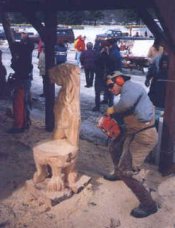In an alternate time line, an alternate reality, this could have been the case. In that world where photographic development arced only down the path of the Daguerreotype. Since so many inventions and breakthroughs build on previous inventions and discoveries, a certain unfortunate chain of accidents, could theoretically prevent many modern products and techniques from ever being discovered.
If certain discoveries/revelations/accidents never happened at the right time. place, or to the right set of people, a lot of what we take for granted would not be around. Things that have changed the world that we take for granted, vulcanized rubber, penicillin, Bakelite plastics, Coca Cola, and so much more, were from accidental discoveries.
So it could be plausible that Talbot never got to invent his method for paper negatives in an alternate reality for whatever reason, and the thought just did not occur to anyone else in a similar position to take advantage of it, or develop it. This also happens a lot, great ideas get shelved as there may not be any perceived market interest or demand for it, or that there just isn't enough capital to back and bring the product out to consumers, or there is resistance to long held beliefs and change of a certain process.
Well in this theoretical daguerreotype world, I think the process would eventually be highly defined if they had 100 so years working on it. High sensitivity/speed, even higher resolution, convenient coating and automatic loading machines, some way of making more than decent copies of images, very thin, light, and strong glass or plastic sheets to coat. If the speed/sensitivity of the material maxed out, then alternative methods like radical lens design and lighting would be employed.
On the social impact side, things would be even more different. Photographic images would be less prevalent, for instance on billboards, and ads, most would be drawn and lithography or engraving would be king. Daguerreotypes would be restricted to the scientific, personal, and art collections. There wouldn't be movies maybe just acted plays.
It would be a strange world indeed, but to them it would be just normal. Imagine a world where the analog process was skipped entirely, it would be a terrible shame, but to that world they think it strange that people here use silver to embed a latent image in animal gelatin, store it in little metal canisters, and develop them with a variety of chemicals to create a negative, before they did it again to finally make a positive. Quite plausible, I mean, where do you think we could be now if there wasn't 400-500 years of the dark ages?



